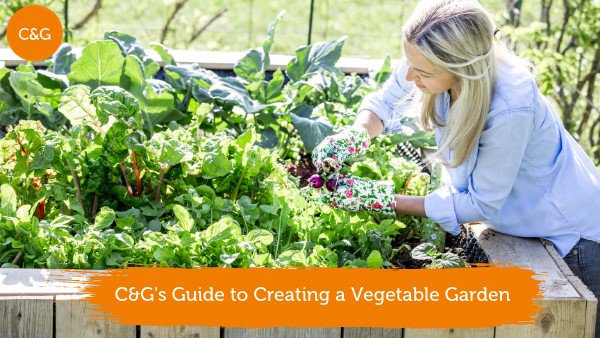C&G's Guide to Creating a Vegetable Garden
Spring is almost upon us, bringing with it sunnier days, milder weather and the perfect seasonal opportunity to put together a vegetable garden and get growing. In this C&G blog, we examine some of the must-do preparation that will have you well on your way to growing a bountiful harvest in no time!
Pick the perfect spot
Sunlight determines what kind of plants you can grow, and the general rule of thumb is the sunnier the location, the better. Ideally, pick a spot in your garden that gets up to six hours of sunlight a day, as this means that you can plant almost anything.
Form your garden beds
You may choose to work with an existing garden, or install raised garden beds or wooden planter boxes. The latter two have the advantage, as you have a greater level of control over the soil type and content. For those with smaller backyards, large terracotta pots or a vertical garden may be the most size appropriate option. If you decide to dig into your existing garden, it’s important to make sure the soil is suitable for growing - so it can be worthwhile to get your soil tested to make sure it’s free from heavy metals.
Decide on your crop
Your crop choice will depend on how much sun your chosen spot will receive, but some great all-rounder options to plant in spring include basil, beetroot, broccoli, capsicum, carrots, lettuce and strawberries. Those with bigger plots can also consider options like sweet corn, eggplant and zucchini, as these vegetables need extra room to spread their tendrils.
Plant your vegetables
Whether it be from seed or seedling, it’s important to plant your crop at the right time and in optimum conditions. Seeds can be germinated separately or sown directly into the soil. If the weather is still on the chilly side, it’s best to sprout the seeds inside and then plant them as you would a normal seedling. When planting seedlings, dig holes that are double the size of the seedling and the same depth as their original pot. Gently flip them upside down and tap on the bottom so the seedling slides into your hand. You can then place them into the pre-prepared hole and gently press the soil around them. Finish it off by watering them with a seaweed solution designed to give them the necessary nutrients to thrive!
Feed and care for your vegetables
Once your seeds/seedlings are planted and your garden beginning to thrive, it’s important to keep it well fed with fertilizers such as Seasol, or your own compost if available. Water it deeply two to three times a week, completely drenching the soil to a depth of 12-15 cms if possible, and get ready to reap the delicious rewards.

